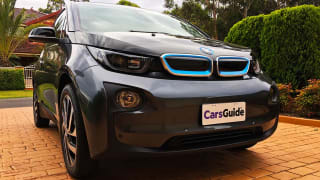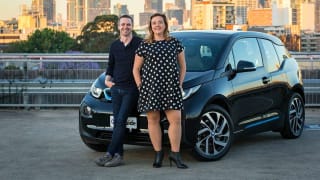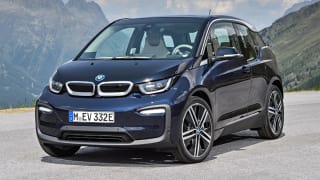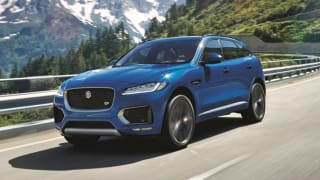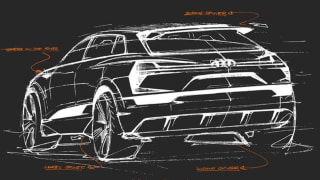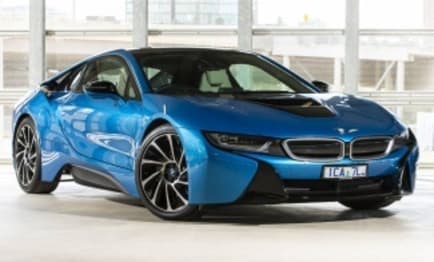
What's on this page
BMW i Series 2017
Carsguide Contributing Journalist Tim Robson had this to say at the time: The i3 is actually reasonably priced for what it is; a compact, stylish, unusual BMW product. Unfortunately, the pure electric car will be, for the foreseeable future, hamstrung by the lack of infrastructure... and a lack of interest at both a government and a corporate business level in providing said infrastructure.
You can read the full review here.This is what Tim Robson liked most about this particular version of the BMW i Series: Quirky, Zero fuel consumption, Seriously zippy in the city
BMW i Series 2017 Price and Specs
Pricing guides

| BMW i Series Model | Body Type | Specs | Price from | Price to | |
|---|---|---|---|---|---|
| I8 Hybrid | Coupe | 1.5L Hyb/PULP 6 SP AUTO | $137,280 | $157,850 | |
| I3 | Hatchback | — Electric 1 SP AUTO | $38,170 | $44,880 | |
| I3 94AH | Hatchback | — Electric 1 SP AUTO | $44,990 | $52,360 | |
| I3 94AH REX (hybrid) | Hatchback | — Electric 1 SP AUTO | $49,610 | $56,980 | |
| I3 Hybrid | Hatchback | — Hyb/ULP 1 SP AUTO | $41,690 | $49,060 | |
BMW i Series 2017 Q&As
Check out real-world situations relating to the BMW i Series here, particularly what our experts have to say about them.
-
How to charge a BMW iX at home (how long, cost & charging point location)?
BMW customers have two ways of charging their iX at home, the fastest being by installing a three-phase 22kW AC wall charger. These cost between $1500 to $3000, with additional energy costs averaging between 21-36 cents per kW, depending on your provider and which state you live in. If you’re hooked up to solar power, the additional cost can be zero. According to BMW, this method will charge the iX xDrive40 from 0-100 per cent in 8 hours and 15 minutes. The other method is a standard AC wall socket, which charges at a much slower rate of 2.3kW. BMW says this will take 39 hours for a full charge.
Show more -
How many seats does the BMW i8 have?
It has two seats.
Show more -
Should I buy an electric car now or later?
It’s definitely true that the march of new-car technology is making big changes to the cars we’re being offered almost on a monthly basis. So, if your current car is just three years old, it might be worth holding on to it and waiting for the next big thing to arrive in showrooms. Certainly, by trading-in at just three years, you’ll pretty much max out the depreciation you’ll suffer in financial terms.
But by waiting, you might find that you can buy an electric vehicle and be able to tap into newer and better infrastructure that will be in place in another few years, rather than put up with the relatively sparse charging-station network currently in this country.
At the moment, a hybrid or plug-in hybrid is a pretty good way to go, provided you use the vehicle mostly in an urban setting, rather than long-distance freeway journeys where the hybrid tech is less advantageous. A hybrid is not exactly future-proof, but it’s a good next step for a lot of Australian car-owners.
As for what brand is best, the tech is getting better and better as time goes by, so it’s likely to be build date rather than brand that will determine the efficiency of the vehicle in question. That said, car owners can’t hold off forever when it comes to upgrading, so for the moment, a hybrid or plug-in hybrid is a logical next car. We’re particularly impressed by the current-model Toyota Camry which is good value to buy, a classy driving experience and offers hybrid fuel efficiency in the right environment. Such cars will be a lot of Australian families’ first hybrid, and rightly so.
Read More: 10 best hybrid vehicles in Australia
Show more -
Range rating for electric cars?
We're at the dawn of the electric era and waiting for an official global standard. It's not about charging the batteries but the range you get for the charge. A simple standard is being developed in Europe. I can recall the confusion when we switched away from the imperial miles per gallon standard in Australia - the economy number got smaller instead of larger when expressed in L/100 km.
Show more
BMW i Series 2017 Dimensions
Dimensions for the 2017 BMW i Series are dependent on which body type is chosen. The maximum width and height is 1942mm x 1578mm and can vary on the basis of model.

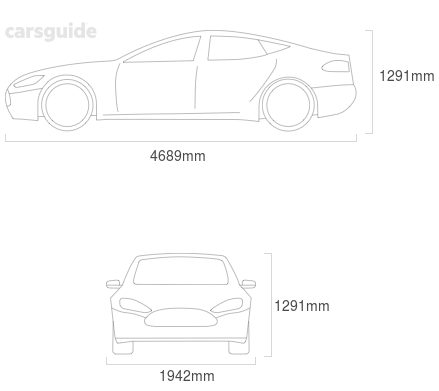
| BMW i Series Model | Body Type | Height x Width x Length | Ground Clearance | |
|---|---|---|---|---|
| I8 Hybrid | Coupe | 1291x1942x4689 mm | 117 mm | |
| I3 | Hatchback | 1578x1775x3999 mm | 140 mm | |
| I3 94AH | Hatchback | 1578x1775x3999 mm | 140 mm | |
| I3 Hybrid | Hatchback | 1578x1775x3999 mm | 140 mm | |
| I3 S 94AH | Hatchback | 1578x1775x3999 mm | 140 mm | |
BMW i Series 2017 Wheel size
Wheel size for the 2017 BMW i Series will vary depending on model chosen, although keep in mind that many manufacturers offer alternate wheel sizes as options on many models.The wheel size available will alter the range of tyres available to be fitted. Standard wheel sizes on the BMW i Series vary from 19x5 inches to 20x7 inches.
| BMW i Series Model | Body Type | Front Tyre Size | Front Rim | Rear Tyre Size | Rear Rim | |
|---|---|---|---|---|---|---|
| I8 Hybrid | Coupe | 195x50 R20 | 20x7 inches | 215x45 R20 | 20x7.5 inches | |
| I3 | Hatchback | 155x70 R19 | 19x5 inches | 175x60 R19 | 19x5.5 inches | |
| I3 94AH | Hatchback | 155x70 R19 | 19x5 inches | 175x60 R19 | 19x5.5 inches | |
| I3 Hybrid | Hatchback | 155x70 R19 | 19x5 inches | 175x60 R19 | 19x5.5 inches | |
| I3 S 94AH | Hatchback | 175x55 R20 | 20x5.5 inches | 195x50 R20 | 20x6 inches | |
BMW i Series 2017 Fuel consumption
Fuel consumption for the 2017 BMW i Series is dependent on the type of engine, transmission, or model chosen. The BMW i Series is available with the following fuel types: Hyb/PULP, Electric and Hyb/ULP.
| BMW i Series Model | Body Type | Specs | Fuel Consumption | |
|---|---|---|---|---|
| I8 Hybrid | Coupe | 1.5L,Hyb/PULP,6 SP AUTO | 2.1L/100km | |
| I3 | Hatchback | Electric,1 SP AUTO | — | |
| I3 94AH | Hatchback | Electric,1 SP AUTO | — | |
| I3 94AH REX (hybrid) | Hatchback | Electric,1 SP AUTO | — | |
| I3 Hybrid | Hatchback | Hyb/ULP,1 SP AUTO | — | |


